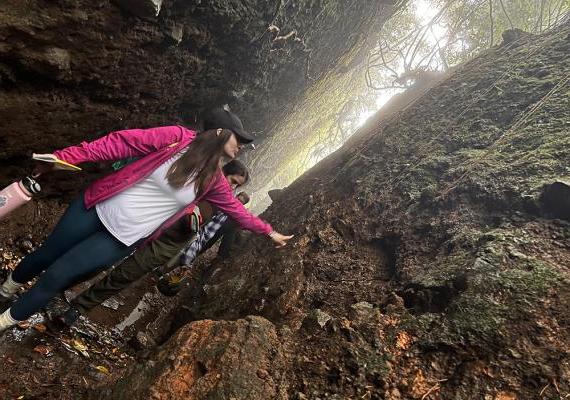
360°: Energy Afterlives
What comes in the wake of energy extraction? This cluster will examine the afterlives of coal, 石油, 还有核能 through the lenses of the arts, 政治科学, 地球科学.
What comes in the wake of energy extraction? This cluster will examine the afterlives of coal, 石油, 还有核能 through the lenses of the arts, 政治科学, 地球科学.
What comes in the wake of energy extraction? This cluster will examine the afterlives of coal, 石油, 还有核能 through the lenses of the arts, 政治科学, 地球科学. 在艺术课上, students will consider how these three energy sources give shape to our lives in countless ways by exploring their place in literature, 音乐, 摄影, creative nonfiction, 和艺术. This approach will allow students to examine the personal, human elements of energy and extraction and their aftereffects. In the science course, 通过阅读, 样品分析, 现场取样, 还有实验室工作, students will assess the geologic conditions under which these three energy sources form - and the long-term environmental consequences of their extraction. In the 政治科学 course, students will examine how communities have organized around places and responded to the afterlives of energy extraction.

标量展览
This Scalar book features the work of students in Professors 塞尔比炉, 乔尔Schlosser, 何塞•范盖拉's courses from the 秋天 2023 Energy Afterlives 360 cluster.
课程
This course covers the fundamentals of coal, 石油, 还有核能, with an emphasis on their environmental and climate impacts. Concepts to be developed include the geologic formation of these materials, their relationships with the biosphere and geochemistry, the long-term environmental consequences of their extractions. Students will conduct specimen and data analysis, 现场取样, 还有实验室工作 in order to examine local environmental impacts related to mining and drilling, as well as global impacts related to climate change. Emphasis will be placed on the scientific 过程, how scientists obtain, 过程, 解释数据. No previous scientific training is required; however, a basic proficiency with data analysis in Excel or R is beneficial, as this course will rely heavily on data analysis. 教 塞尔比炉.
This course investigates what community means, how communities organize themselves around place, how these places are integral/included/participants in community, in particular as sources of energy and resources for extraction. We will take orientation from the argument developed by Daniel Kemmis, former minority leader in the Montana House of Representatives and Mayor of Missoula, who articulated a collective, cooperative model for place-based governance in the American West. We’ll then consider this model and some of its critics in three key areas where place has mattered, for better or for worse: Appalachia and coal; Athabasca and 石油; and Alaska and nuclear power. Each case will offer an opportunity to think through the meaning and politics of community as well as to develop frameworks of power analysis that can illustrate how change might occur. 教 乔尔Schlosser.
煤炭. 石油. 核能源. These items give shape to our everyday lives in countless ways. They impact our health, our politics, our very survival on earth. 不过, because these resources permeate nearly every aspect of our existence, the human mind can struggle to comprehend them in their totality. 在本课程中, we’ll explore texts that engage with our environment to help us bring humans’ relationship to these materials into focus. Scientific, historical, 经济 studies tend to focus on their scale and widespread impact. 阅读故事, 看电影, looking at 摄影 and other visual materials will allow us to imagine coal, 石油, 还有核能 more intimately—through individual, 文化, aesthetic perspectives.
Here are some of the key questions students will ask with 何塞•范盖拉 throughout the semester: How can art help us understand—and perhaps even change—our material, 经济, social environments? How has our relationship to these materials changed over time? How do environmental and material realities impact 文化 production and imagination?


